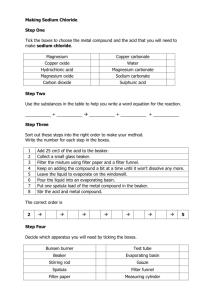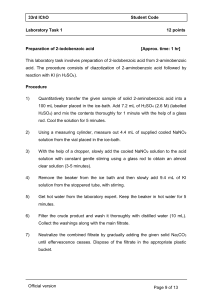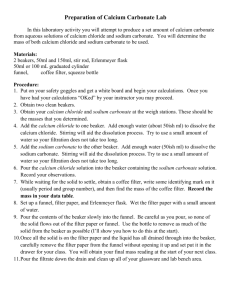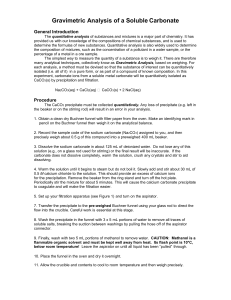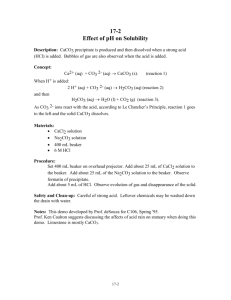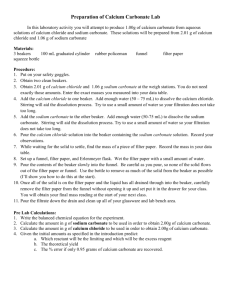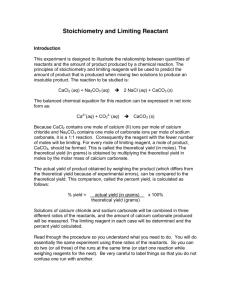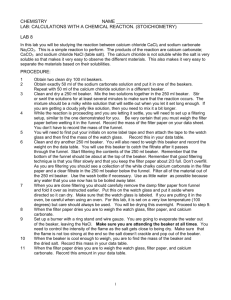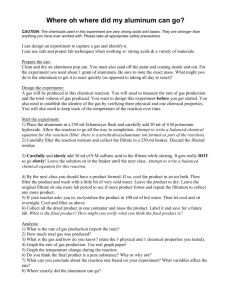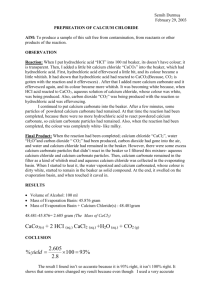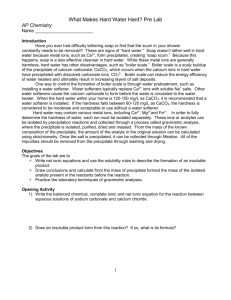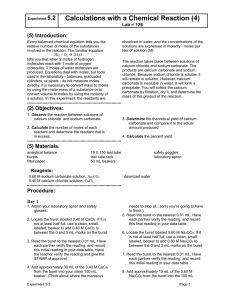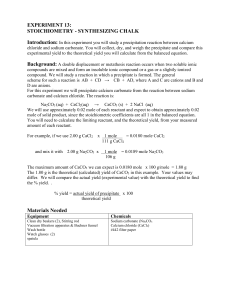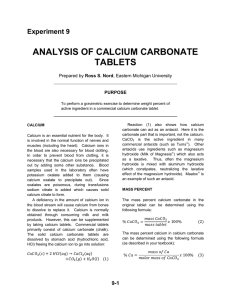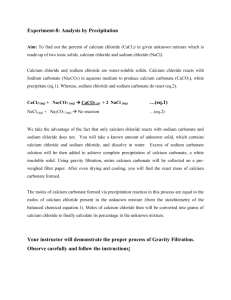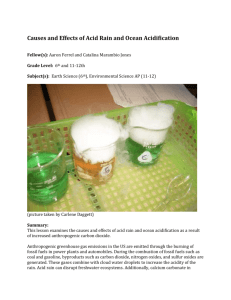Limiting Reagents Lab
advertisement
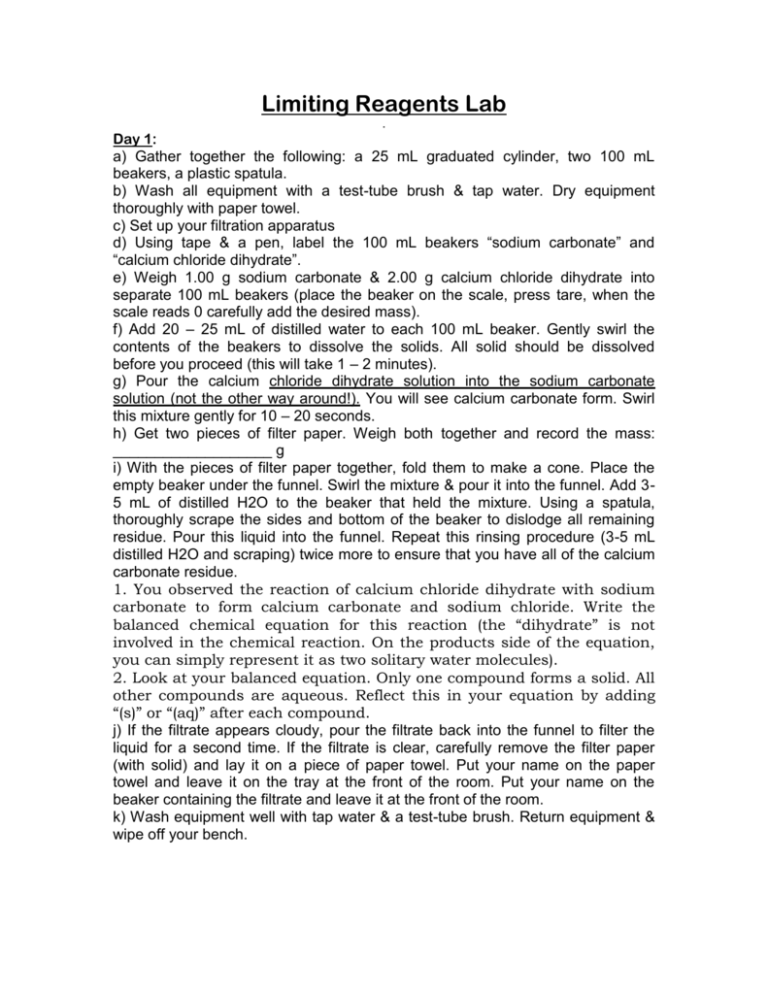
Limiting Reagents Lab . Day 1: a) Gather together the following: a 25 mL graduated cylinder, two 100 mL beakers, a plastic spatula. b) Wash all equipment with a test-tube brush & tap water. Dry equipment thoroughly with paper towel. c) Set up your filtration apparatus d) Using tape & a pen, label the 100 mL beakers “sodium carbonate” and “calcium chloride dihydrate”. e) Weigh 1.00 g sodium carbonate & 2.00 g calcium chloride dihydrate into separate 100 mL beakers (place the beaker on the scale, press tare, when the scale reads 0 carefully add the desired mass). f) Add 20 – 25 mL of distilled water to each 100 mL beaker. Gently swirl the contents of the beakers to dissolve the solids. All solid should be dissolved before you proceed (this will take 1 – 2 minutes). g) Pour the calcium chloride dihydrate solution into the sodium carbonate solution (not the other way around!). You will see calcium carbonate form. Swirl this mixture gently for 10 – 20 seconds. h) Get two pieces of filter paper. Weigh both together and record the mass: ___________________ g i) With the pieces of filter paper together, fold them to make a cone. Place the empty beaker under the funnel. Swirl the mixture & pour it into the funnel. Add 35 mL of distilled H2O to the beaker that held the mixture. Using a spatula, thoroughly scrape the sides and bottom of the beaker to dislodge all remaining residue. Pour this liquid into the funnel. Repeat this rinsing procedure (3-5 mL distilled H2O and scraping) twice more to ensure that you have all of the calcium carbonate residue. 1. You observed the reaction of calcium chloride dihydrate with sodium carbonate to form calcium carbonate and sodium chloride. Write the balanced chemical equation for this reaction (the “dihydrate” is not involved in the chemical reaction. On the products side of the equation, you can simply represent it as two solitary water molecules). 2. Look at your balanced equation. Only one compound forms a solid. All other compounds are aqueous. Reflect this in your equation by adding “(s)” or “(aq)” after each compound. j) If the filtrate appears cloudy, pour the filtrate back into the funnel to filter the liquid for a second time. If the filtrate is clear, carefully remove the filter paper (with solid) and lay it on a piece of paper towel. Put your name on the paper towel and leave it on the tray at the front of the room. Put your name on the beaker containing the filtrate and leave it at the front of the room. k) Wash equipment well with tap water & a test-tube brush. Return equipment & wipe off your bench. Day 2 l) Weigh the filter paper containing the dry CaCO3. Be careful not to spill any solid. Calculate the mass of CaCO3 produced: filter paper & CaCO3 _______ g filter paper (see above) ______ g = ______ g. Keep your filter paper (with product) and filtrate until you have answered all of the questions below. 3. Which chemical is the limiting reagent in this lab? (show calculations for all questions) 4. Which reactant is there an excess of? 5. How many grams of NaCl should be produced from today’s lab? 6. How many grams of CaCO3 should be produced from today’s lab? 7. Find the percent yield of CaCO3. 8. Was the mass of CaCO3 correctly predicted? (In other words, was the actual mass closer to your question 6 value?) m) Throw the filter paper in the garbage, dump the filtrate down the sink, clean and return the beaker.
